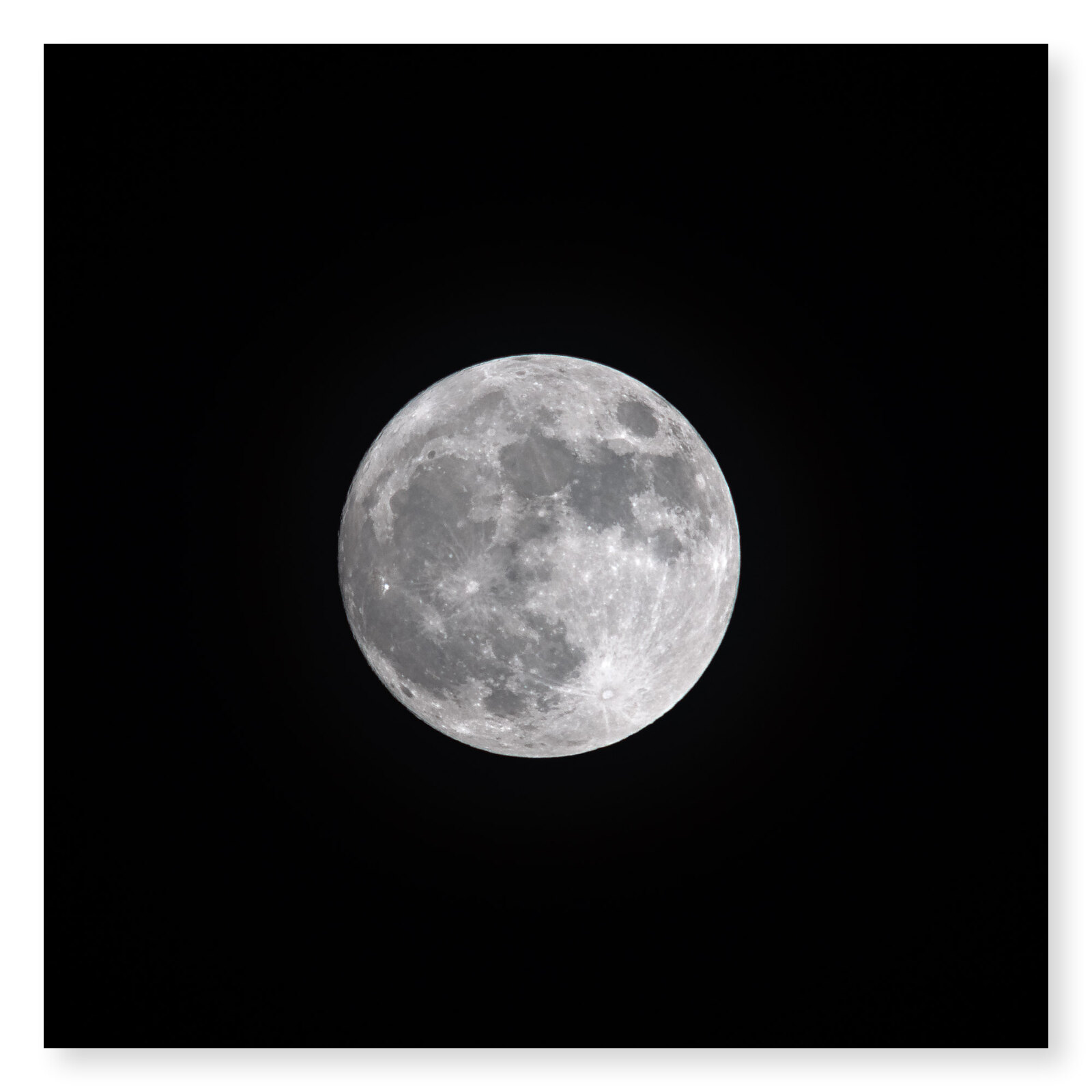Godfrey
somewhat colored
I looked at the Moon. The air was clear, the Moon full. Harvest Moon.
Hmm, last Moon I did was with the Leica 180/4 + 2x telextender. Not quite long enough, had to crop the frame by 50% to get a decent image size. I wonder if that old piece of junk Sigma 600mm would do anything useful...?

Full Moon (Harvest Moon) - Santa Clara 2020
Panasonic GX9 + Sigma 600mm f/8 Mirror Reflex (Nikon F mount)
ISO 200 @ f/8 @ 1/200
Okay, it worked pretty well. 🙂
That's basically just a square crop on the Micro-FourThirds frame, so the diameter of the Moon with an equivalent FF 1200mm lens is about 6mm on the sensor. Not bad for a lens I paid $85 for about a decade ago!
enjoy! G
Hmm, last Moon I did was with the Leica 180/4 + 2x telextender. Not quite long enough, had to crop the frame by 50% to get a decent image size. I wonder if that old piece of junk Sigma 600mm would do anything useful...?

Full Moon (Harvest Moon) - Santa Clara 2020
Panasonic GX9 + Sigma 600mm f/8 Mirror Reflex (Nikon F mount)
ISO 200 @ f/8 @ 1/200
Okay, it worked pretty well. 🙂
That's basically just a square crop on the Micro-FourThirds frame, so the diameter of the Moon with an equivalent FF 1200mm lens is about 6mm on the sensor. Not bad for a lens I paid $85 for about a decade ago!
enjoy! G

